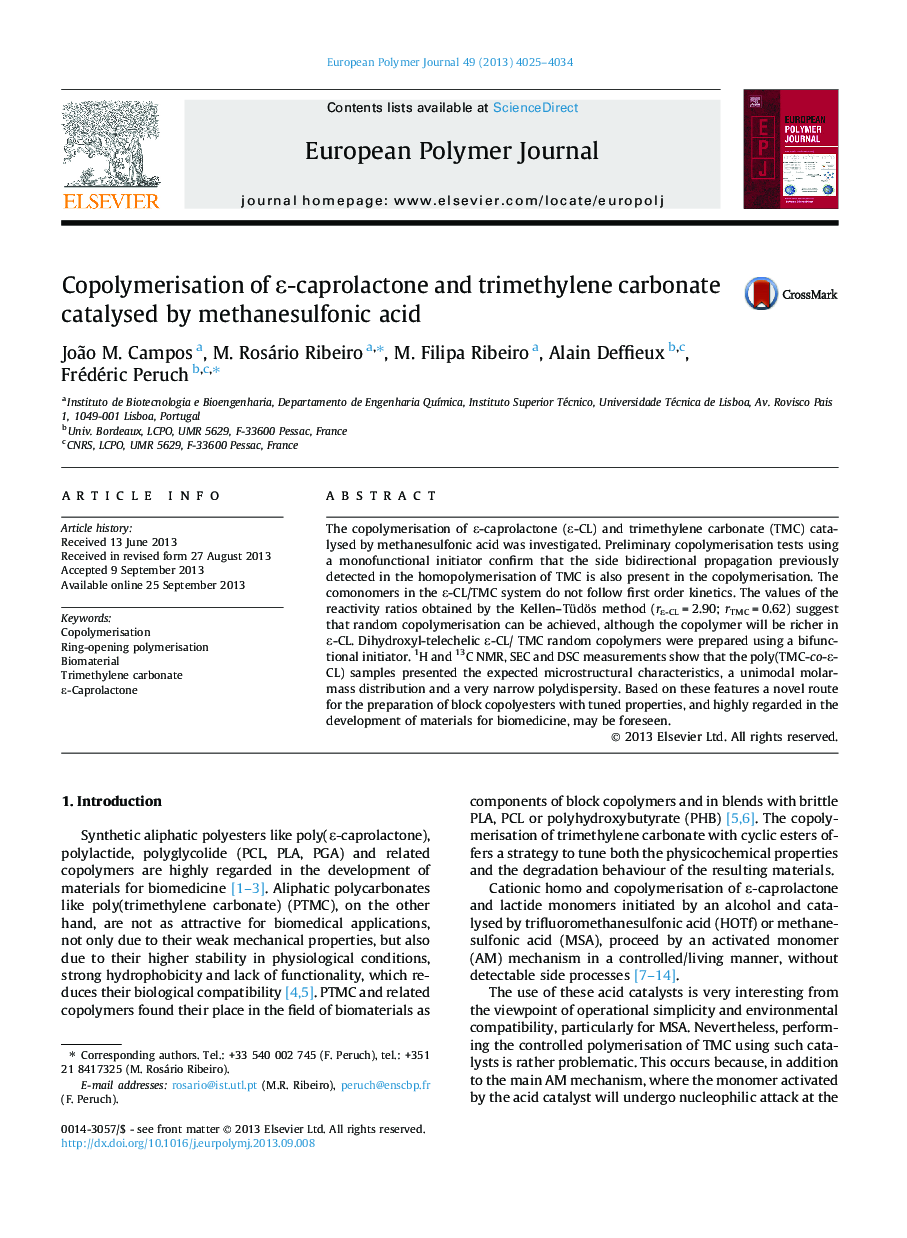| Article ID | Journal | Published Year | Pages | File Type |
|---|---|---|---|---|
| 1401947 | European Polymer Journal | 2013 | 10 Pages |
•Copolymerisation of TMC and ε-CL was catalysed by methanesulfonic acid.•Mono and bifunctional alcohols were used as initiators.•Monodisperse distribution were observed with bifunctional initiators.•Random copolymers of TMC and ε-CL were produced.
The copolymerisation of ε-caprolactone (ε-CL) and trimethylene carbonate (TMC) catalysed by methanesulfonic acid was investigated. Preliminary copolymerisation tests using a monofunctional initiator confirm that the side bidirectional propagation previously detected in the homopolymerisation of TMC is also present in the copolymerisation. The comonomers in the ε-CL/TMC system do not follow first order kinetics. The values of the reactivity ratios obtained by the Kellen–Tüdös method (rε-CL = 2.90; rTMC = 0.62) suggest that random copolymerisation can be achieved, although the copolymer will be richer in ε-CL. Dihydroxyl-telechelic ε-CL/ TMC random copolymers were prepared using a bifunctional initiator. 1H and 13C NMR, SEC and DSC measurements show that the poly(TMC-co-ε-CL) samples presented the expected microstructural characteristics, a unimodal molar-mass distribution and a very narrow polydispersity. Based on these features a novel route for the preparation of block copolyesters with tuned properties, and highly regarded in the development of materials for biomedicine, may be foreseen.
Graphical abstractFigure optionsDownload full-size imageDownload as PowerPoint slide
